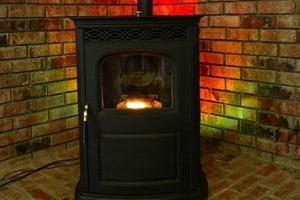
Wood stoves can cause dangerous levels of air pollution.
According to the Environmental Protection Agency (EPA), indoor wood fires can pose a serious threat to air quality for people both inside and outside of the home. The agency is currently drafting new rules governing indoor wood burning and the efficiency of wood-burning stoves, expected to be put into effect this February. In the meantime, they have published a list of tips for safer, healthier indoor fires. Here are some things you can do to keep the pollution from your indoor wood fire to a minimum:
- Use dry logs. Dry, seasoned wood burns much more cleanly and results in less smoke than green or damp kindling. To tell whether your wood is dry enough, knock two pieces against one another and listen for the telltale hollow sound. You can also purchase a wood moisture meter for $20 or less at a hardware store.
- Burn only plain wood. Resist the urge to use treated or painted wood scraps as fuel, as the chemicals released when burning treated wood can be harmful to both your stove and your lungs.
- Check for soot left behind. If dark, sooty residue builds up on the door of your wood stove or the inside of your fireplace, it's a sign that the wood you're using is giving off too much smoke.
- Track air quality in your area. Make sure that you are aware of any air quality warnings and burn bans in your area to avoid a slap on the wrist or a fine for burning when it's prohibited.
If you live in an area where many people use wood fires to heat their homes, or if you have a wood-burning stove yourself, using a home air purifier is a wise step for preventing exposure to hazardous chemicals and particles. Contact US Air Purifiers today for help in finding the right air purifier for your home.